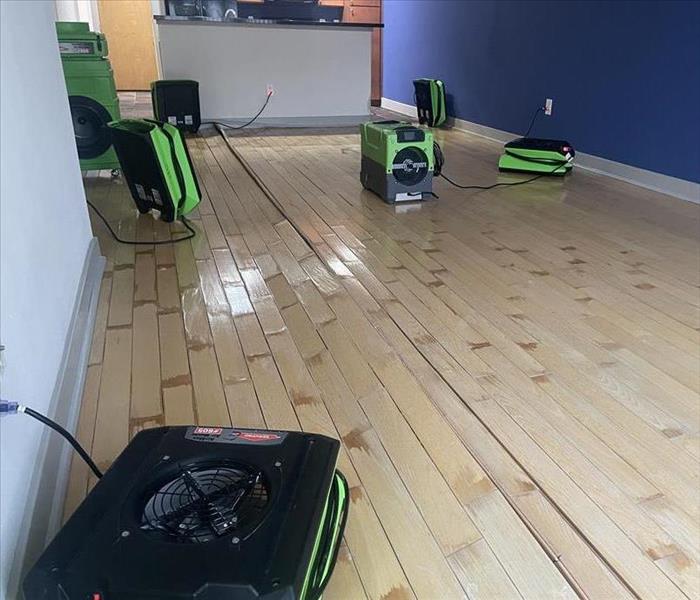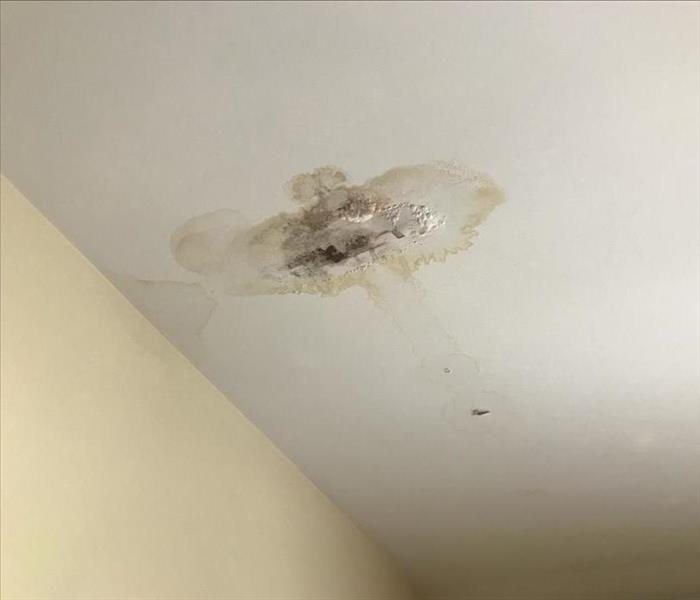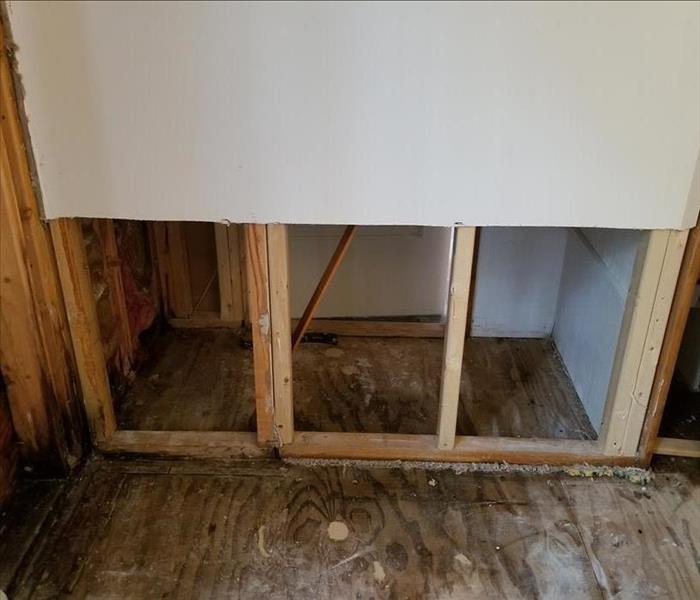Recent Water Damage Posts
Handling Water Damage During Home Renovations
10/16/2024 (Permalink)
 Handling water damage during home renovations can be daunting, but you don’t have to do it alone.
Handling water damage during home renovations can be daunting, but you don’t have to do it alone.
Renovating your home can be an exciting process, but it can also come with its fair share of challenges. One of the most significant issues homeowners face during renovations is water damage. Whether it's from a leaky roof, burst pipes, or unexpected flooding, water damage can quickly turn your dream project into a nightmare. Here’s how to handle water damage during home renovations effectively.
Identifying the Source of Water Damage
The first step in dealing with water damage during renovations is to identify the source. Water can seep into your home from various places, such as a compromised roof, faulty plumbing, or even a minor leak. Pinpointing the exact cause is crucial to preventing further damage. If you notice damp spots, water stains, or a musty odor, don’t ignore them—these could be signs of a more significant issue. It's essential to address the source immediately to avoid escalating the problem and complicating your renovation project.
Assessing the Extent of the Damage
Once you've identified the source of the water damage, the next step is to assess its extent. Water can cause a variety of problems, from warping wood and damaging drywall to compromising the structural integrity of your home. Inspect the affected areas thoroughly, looking for signs of damage like peeling paint, swollen floors, or soft spots in the walls. In some cases, you may need to remove parts of the damaged structure to get a better understanding of the scope of the issue. This assessment will help you determine whether you can proceed with your renovation as planned or if you need to take additional steps to address the damage.
Drying Out the Affected Area
Drying out the area affected by water damage is critical to preventing further issues like mold growth and structural damage. Use fans, dehumidifiers, and proper ventilation to speed up the drying process. If the damage is extensive, you may need to hire professionals to ensure the area is completely dry before continuing with your renovation. Remember, it's better to take extra time to dry the space thoroughly than to risk ongoing problems that could affect the quality and longevity of your renovation.
Repairing and Preventing Future Damage
After drying out the area, the next step is repairing the damage. Depending on the severity, this might involve replacing drywall, flooring, or even structural components. It's also a good idea to address any underlying issues that caused the water damage in the first place. This could mean fixing leaks, improving drainage around your home, or installing a better waterproofing system. Taking these preventive measures will help protect your renovation investment and ensure your home remains in top condition.
Partnering with Professionals
Handling water damage during home renovations can be daunting, but you don’t have to do it alone. Partnering with experienced professionals like SERVPRO® can help you navigate the complexities of water damage restoration, ensuring your renovation stays on track. Our team is equipped to handle everything from minor leaks to significant flood damage, allowing you to focus on bringing your renovation vision to life.
Cleaning Carpets and Rugs After Water Incidents
6/12/2024 (Permalink)
 In this blog, we’ll discuss carpet cleaning after water incidents, and how to work with SERVPRO® for water remediation services.
In this blog, we’ll discuss carpet cleaning after water incidents, and how to work with SERVPRO® for water remediation services.
Water incidents such as floods, burst pipes, or leaks can cause severe damage to carpets and rugs in your home or business. The longer you wait to address water damage, the more severe the damage can become. In addition to the visible damage, water incidents may cause mold and mildew growth, leading to problems with air quality and a foul odor. In this blog, we’ll discuss carpet cleaning after water incidents, and how to work with SERVPRO® for water remediation services.
Step 1: Identify the Type of Water Damage
The type of water damage to your carpeting will influence the cleaning process. Three categories of water damage can be classified clean water, gray water, and black water. Clean water is water that is from a clean source like a broken pipe or rainwater. Gray water may have contaminants that can pose a health risk, like from a washing machine or dishwasher. Black water is typically sewage water or flood water that has come from outside. Black water damage is the most severe type of water damage and may require throwing out the carpet in extreme cases.
Step 2: Assess the Damage
SERVPRO professionals will evaluate the extent of the water damage to the carpet and rugs. They will determine the best approach for cleaning and repairing your carpets. If the carpets are beyond repair, they will recommend replacement. Our professionals use state-of-the-art equipment and techniques to dry and clean carpets and rugs after water damage. Our goal is to return your carpets to a preloss condition.
Step 3: Dry Out the Carpets and Rugs
One of the essential steps to cleaning carpets and rugs after water incidents is to dry them out. If left damp, the carpets and rugs could begin to grow mold or mildew, which can pose a health risk to occupants of the space. SERVPRO professionals will use specialized equipment like dehumidifiers, air movers, and air scrubbers to dry and clean your carpets and rugs. They will also remove the padding from the carpet to ensure that all water damage is removed during the restoration process.
Step 4: Clean and Sanitize the Carpeting
After the carpets and rugs are dry, it is essential to clean and sanitize them. SERVPRO professionals use professional-grade cleaning methods to remove mold, dirt, bacteria, and other contaminants left behind after the water damage incident. They will use EPA-approved cleaning solutions to clean and sanitize the carpets and rugs to ensure that they are safe to use in your home or business.
In conclusion, water damage can be a severe problem for homeowners and businesses, especially when it comes to carpeting. If you have experienced water-damaged carpets, it is essential to act quickly and contact SERVPRO for water remediation services. Our professionals use advanced equipment and techniques to dry out and clean your carpets and rugs to minimize the damage and return them to a preloss condition, as soon as possible. If you have any questions about water damage restoration or carpet cleaning, please contact us today.
How to Clean and Restore Water-Damaged Upholstery
2/14/2024 (Permalink)
Water damage can be particularly distressing when it affects your upholstered furniture. Whether due to a burst pipe, flooding, or a leaky roof, water-damaged upholstery requires immediate attention to prevent permanent damage and unpleasant odors. In this blog, we'll guide you through the proper steps for cleaning and restoring water-damaged upholstery, helping you revive the comfort and aesthetics of your furniture.
Assessment and Safety
Before beginning the restoration process, assess the extent of the water damage. Ensure that the area is safe to work in, and if the water damage is severe, consider seeking professional assistance.
Time is of the essence when dealing with water-damaged upholstery. The longer moisture lingers, the higher the risk of mold and mildew growth. Begin the cleaning and restoration process as soon as possible to prevent further damage.
Remove Excess Water
If the upholstery is saturated, start by removing excess water. Blot the affected areas with absorbent towels or use a wet/dry vacuum to extract as much moisture as possible.
If the furniture is movable, separate wet cushions and pillows from the frame. Place them in a well-ventilated area to air dry. Use fans and dehumidifiers to speed up the drying process.
Avoid Sunlight and Heat
While air drying, avoid direct sunlight and excessive heat, as these can cause colors to fade and fabrics to shrink. Opt for a controlled drying environment to maintain the integrity of the upholstery.
Once the upholstery has dried, clean it with a mild detergent. Test the detergent in an inconspicuous area first to ensure it doesn't cause discoloration. Gently scrub the fabric with a soft brush or sponge. Water damage often leaves behind unpleasant odors. Mix equal parts white vinegar and water and lightly spray the upholstery. Allow it to air dry. Vinegar is effective in neutralizing odors without causing additional damage.
Steam Cleaning for Deeper Cleaning
For more thorough cleaning, consider using a steam cleaner designed for upholstery. Steam cleaning helps remove dirt and bacteria while sanitizing the fabric. Follow the manufacturer's instructions for safe use.
In cases of severe water damage or extensive staining, professional upholstery cleaning services may be necessary. Professional cleaners have the expertise and equipment to tackle challenging issues and restore your furniture to its former glory. Once the upholstery is clean and dry, consider applying a fabric protector. This helps repel future stains and water damage, providing an additional layer of defense for your furniture.
Consult Manufacturer Guidelines
Always refer to the manufacturer's care instructions for your specific upholstery. Different fabrics and finishes may require unique cleaning methods, and following guidelines ensures you don't inadvertently cause further damage.
Once all components are clean and dry, reassemble the furniture carefully. Ensure that all cushions and pillows are completely dry before placing them back on the frame.
Water-damaged upholstery doesn't have to spell the end for your favorite furniture pieces. With prompt action, the right cleaning methods, and a commitment to thorough restoration, you can revive water-damaged upholstery and enjoy a fresh start for your beloved furnishings.
5 Common Causes of Residential Water Damage
5/15/2023 (Permalink)
 By understanding the most common causes of water damage and taking steps to prevent them, you can protect your home and avoid costly repairs.
By understanding the most common causes of water damage and taking steps to prevent them, you can protect your home and avoid costly repairs.
Water damage is a common problem that homeowners may face. It can be caused by a variety of factors, ranging from natural disasters to simple household accidents. Regardless of the cause, water damage can be a costly and time-consuming issue to deal with. In this blog, we'll discuss the 5 most common causes of water damage and how to prevent them.
Plumbing issues
Plumbing problems are one of the most common causes of water damage in homes. Leaking pipes, burst pipes, and faulty appliances can all lead to water damage. To prevent plumbing-related water damage, it's important to have your plumbing inspected regularly and to fix any leaks or issues as soon as they're discovered.
Natural disasters
Natural disasters such as floods, hurricanes, and heavy rainstorms can cause significant water damage to homes. Unfortunately, there's little that can be done to prevent natural disasters from occurring. However, there are steps you can take to minimize the damage. For example, you can install flood barriers and have a plan in place for evacuating your home in the event of a flood.
Faulty appliances
Washing machines, refrigerators, and other household appliances can malfunction and cause water damage. It's important to inspect your appliances regularly and replace any worn or faulty parts. Additionally, make sure to turn off your appliances and unplug them when not in use.
Roof leaks
Roof leaks can be caused by a variety of factors, including damaged shingles, clogged gutters, and improper installation. To prevent roof-related water damage, it's important to have your roof inspected regularly and to fix any issues as soon as they're discovered. Additionally, make sure your gutters are clean and functioning properly.
Poor ventilation
Poor ventilation can cause condensation to build up in your home, leading to water damage. This can occur in bathrooms, kitchens, and other areas where moisture is present. To prevent this type of water damage, make sure your home is properly ventilated. Use exhaust fans in bathrooms and kitchens, and open windows and doors to let fresh air in.
Water damage is a common problem that homeowners may face. By understanding the most common causes of water damage and taking steps to prevent them, you can protect your home and avoid costly repairs. If you do experience water damage, it's important to address the issue promptly to prevent further damage and to seek help from a professional restoration company. By taking these steps, you can keep your home safe and dry for years to come.

 24/7 Emergency Service
24/7 Emergency Service


